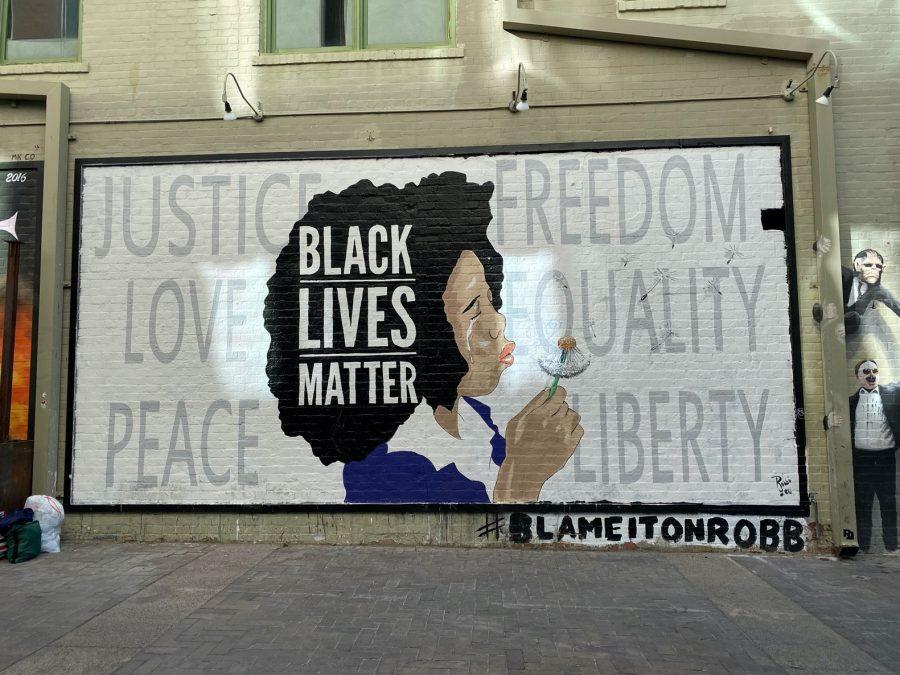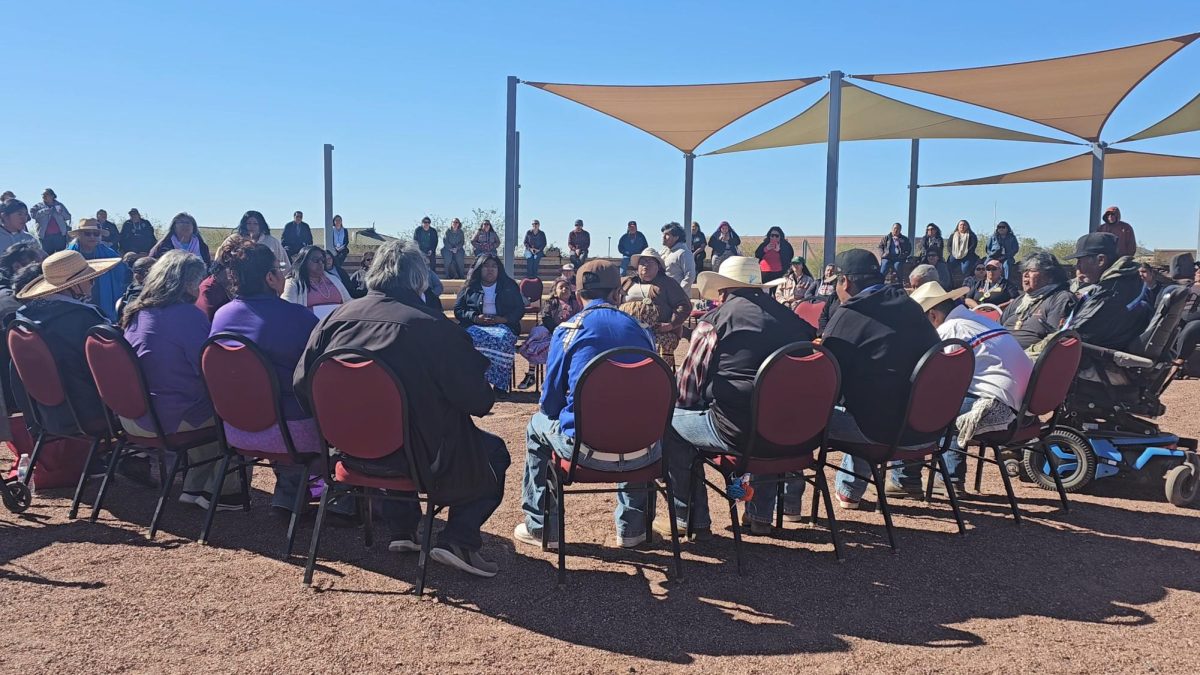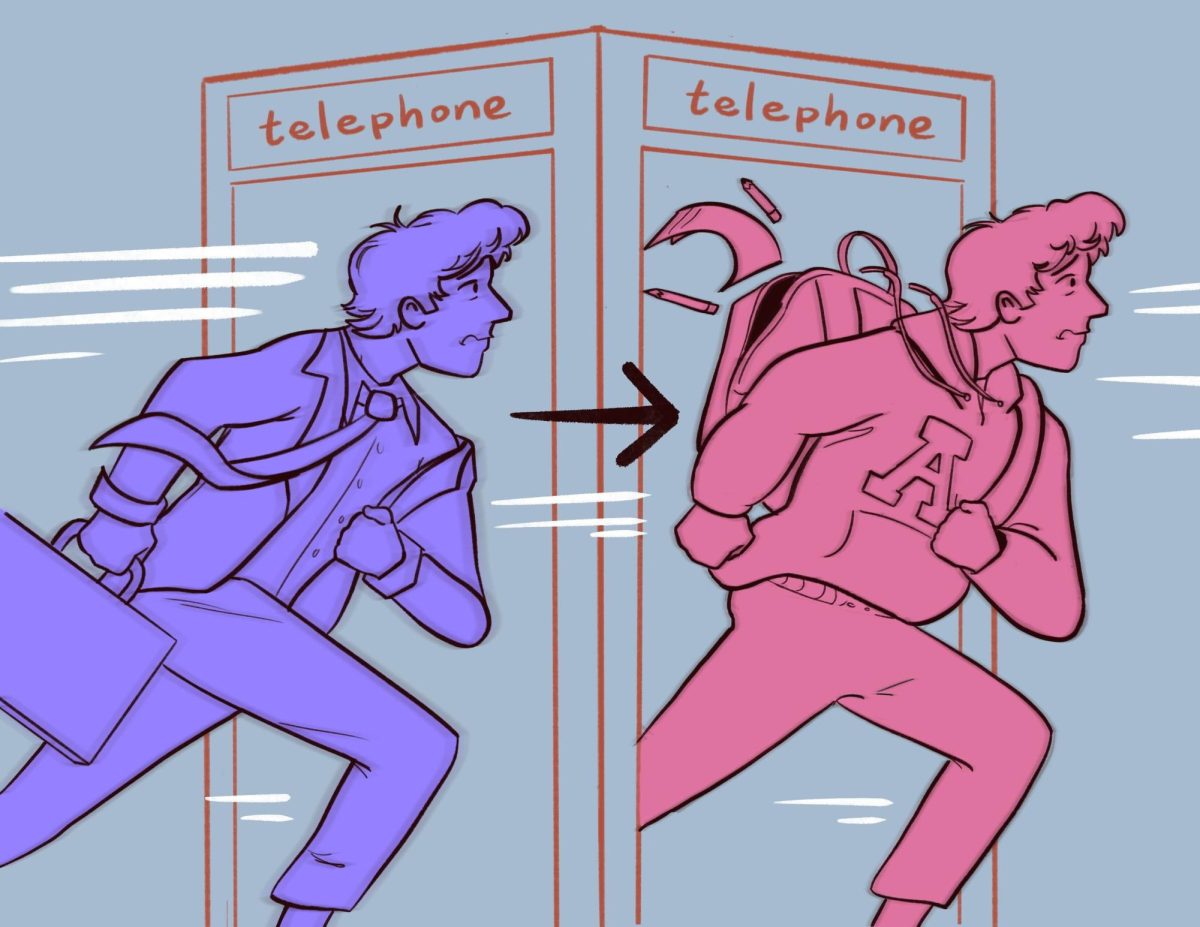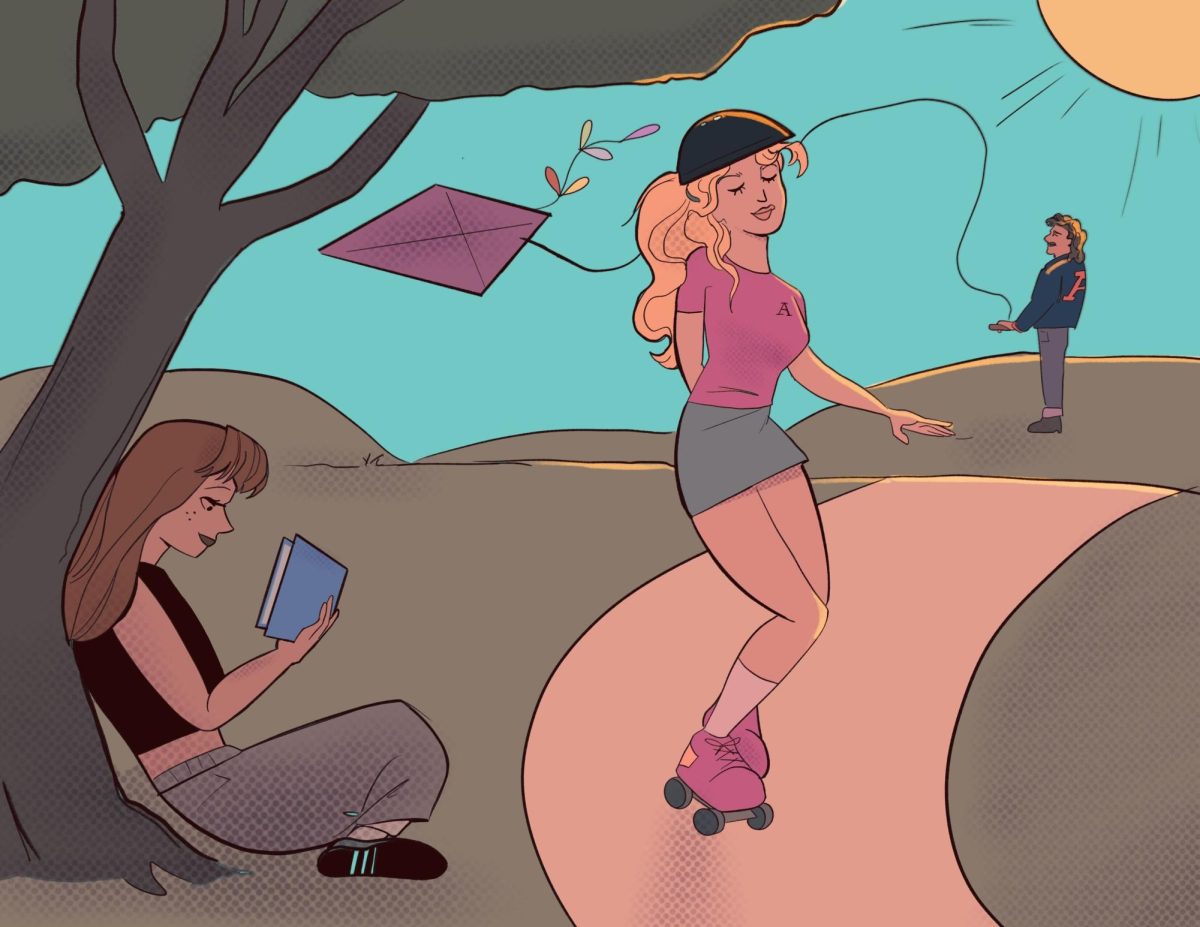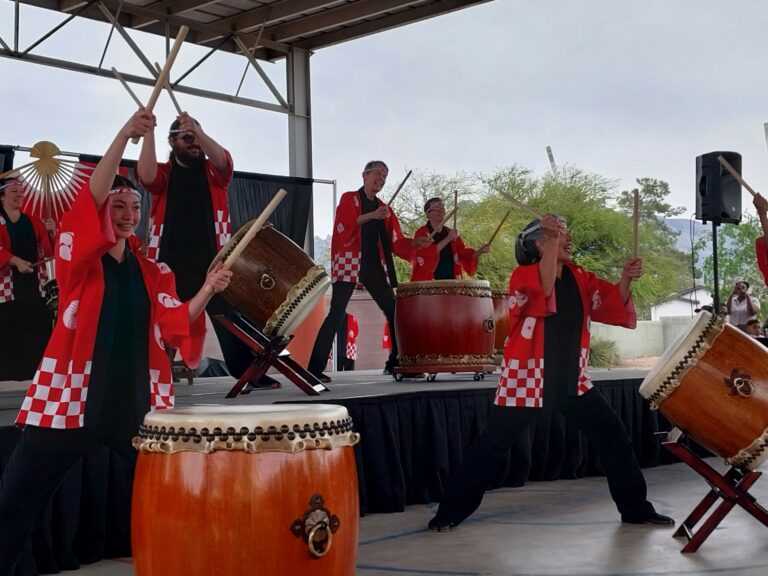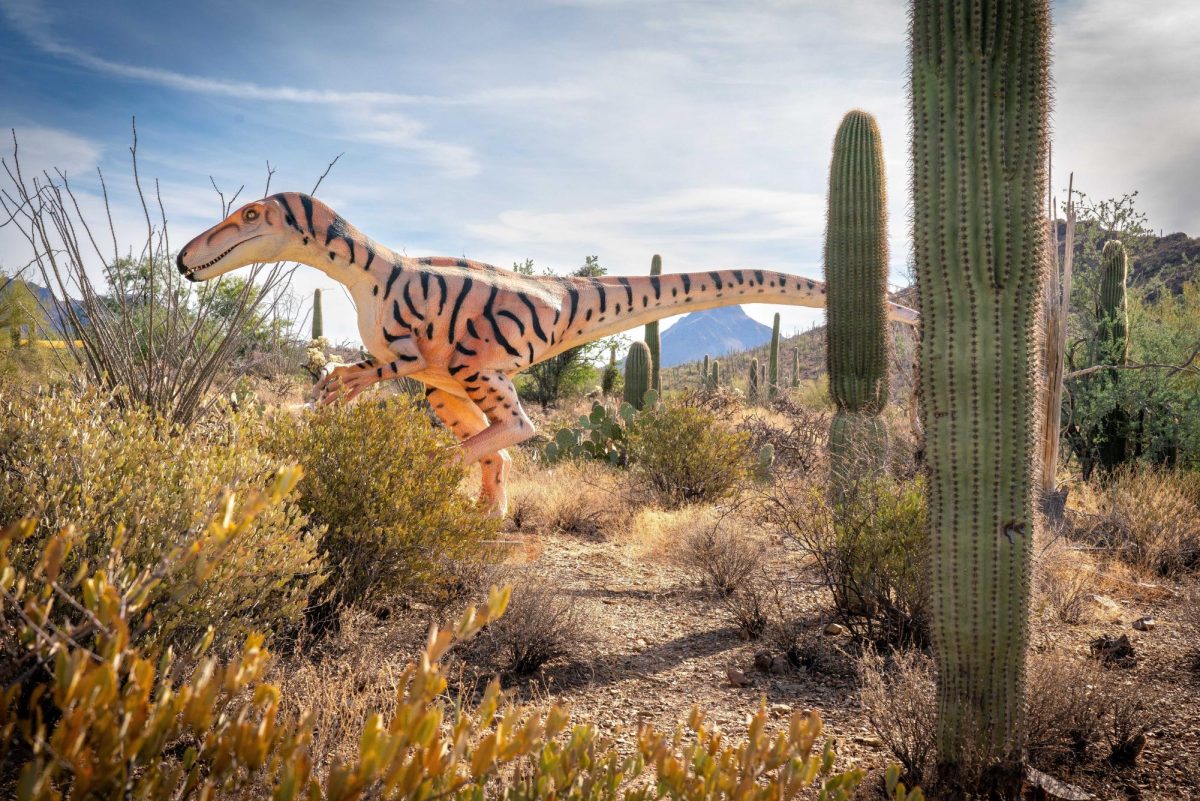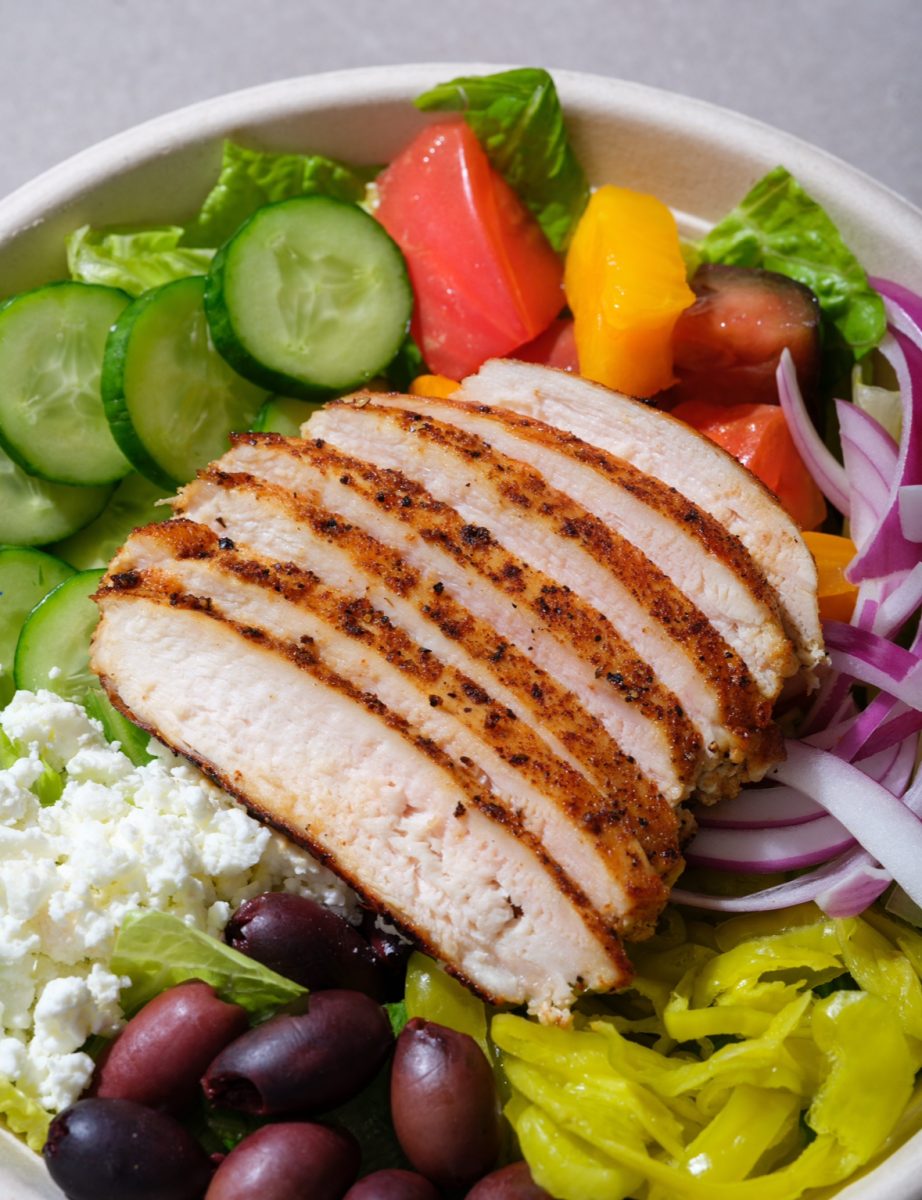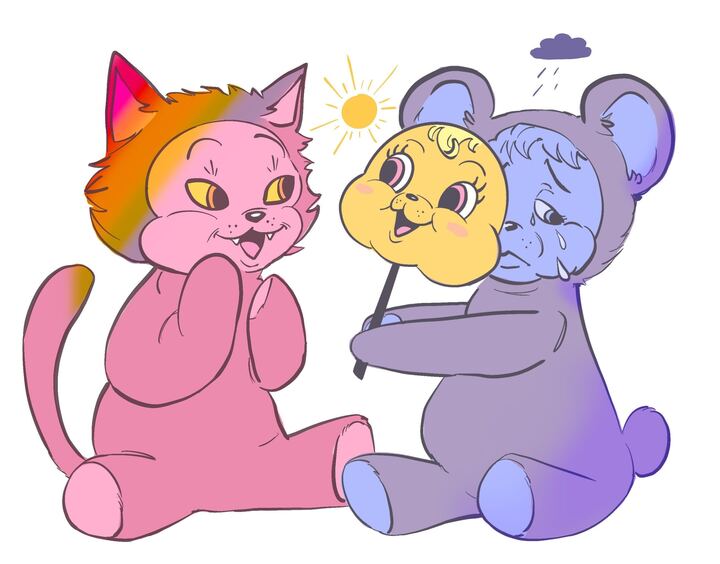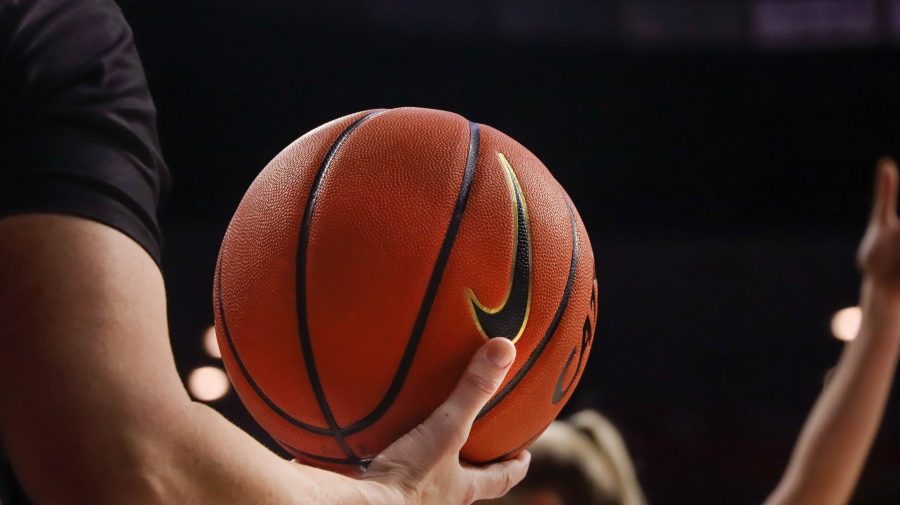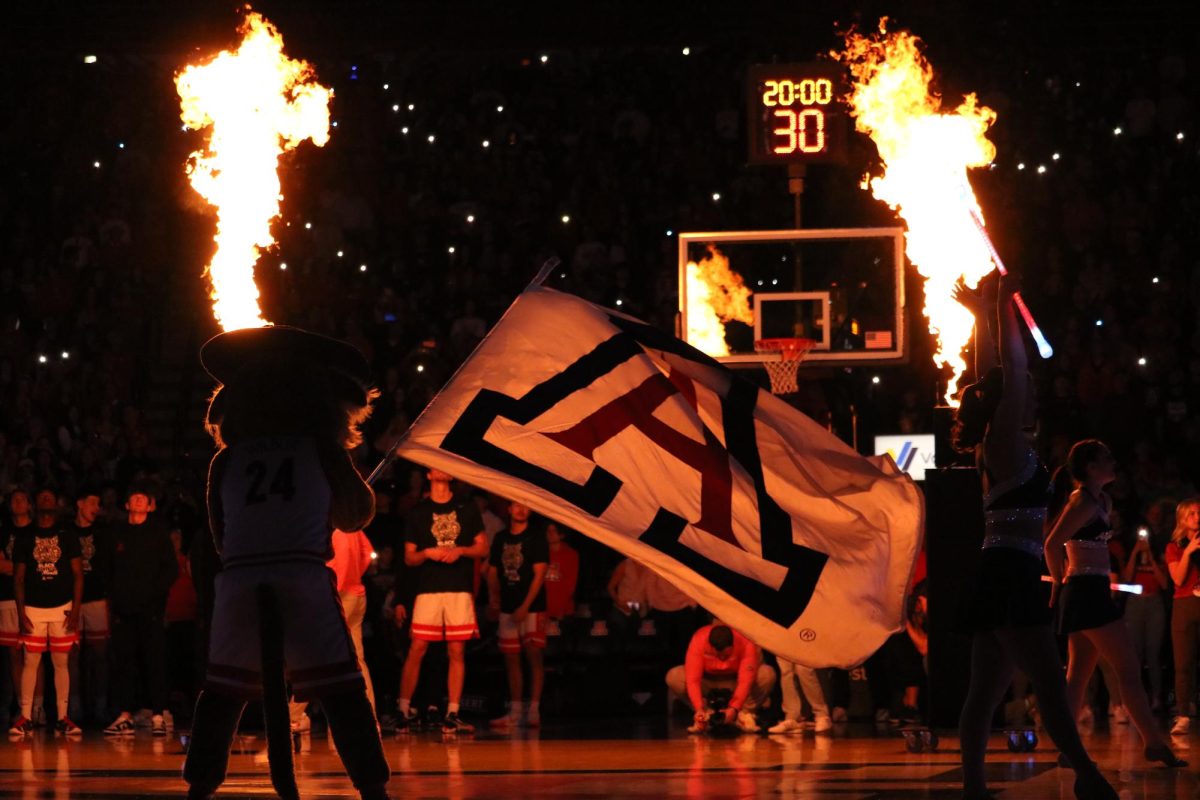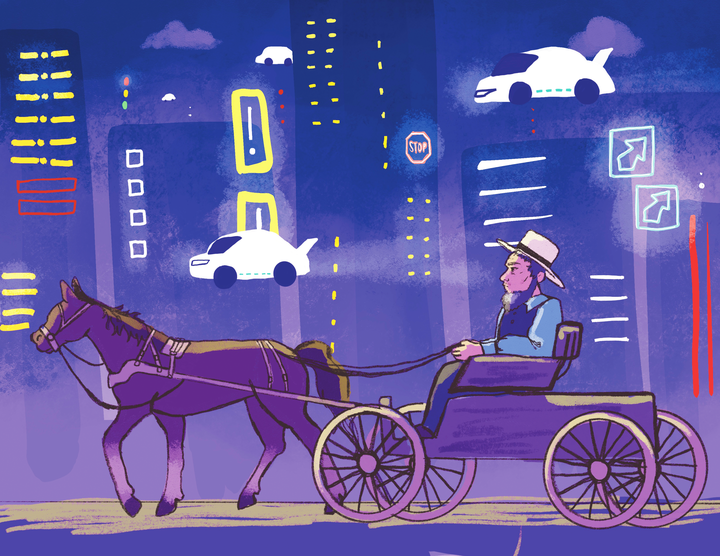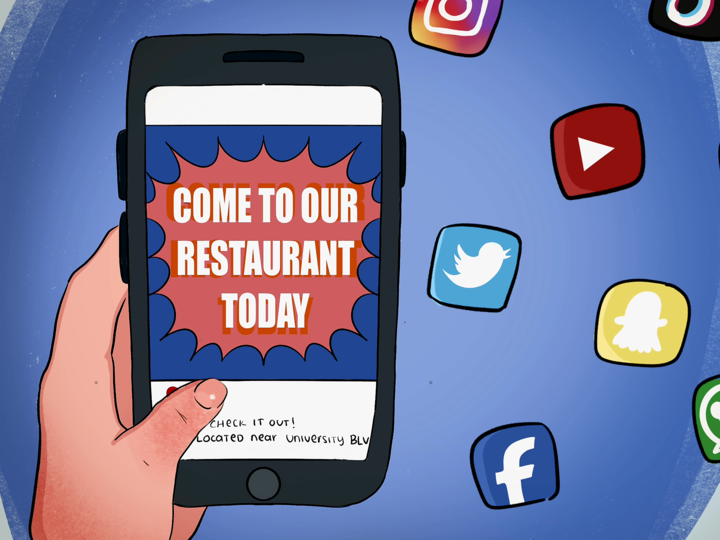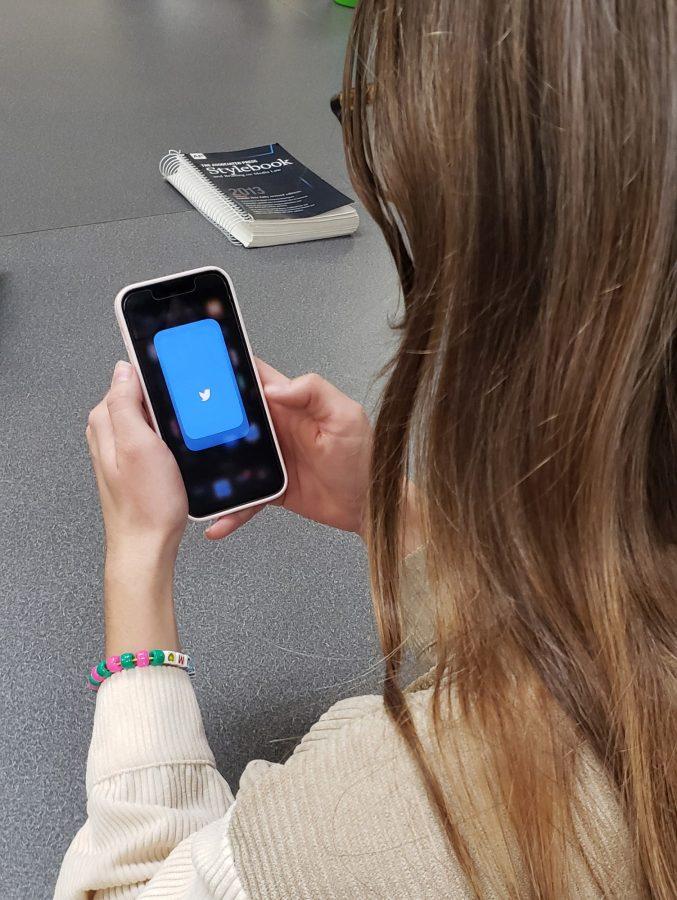This is the third and final installment of Selena Kuikahi’s “ART IS ACTIVISM” series. Read parts one and two on the Daily Wildcat website.
The decay of a work’s relevancy is a common fear amongst modern-day creatives. After all, it’s the buzz that fuels longevity, at least in the popular sense. Our third and final artist of the mini-series, however, hopes that his work is left as a blip in our socio-political timeline. Robbie Lee Harris said that his “[U]ltimate goal is that we get to a place where my mural doesn’t make sense.”
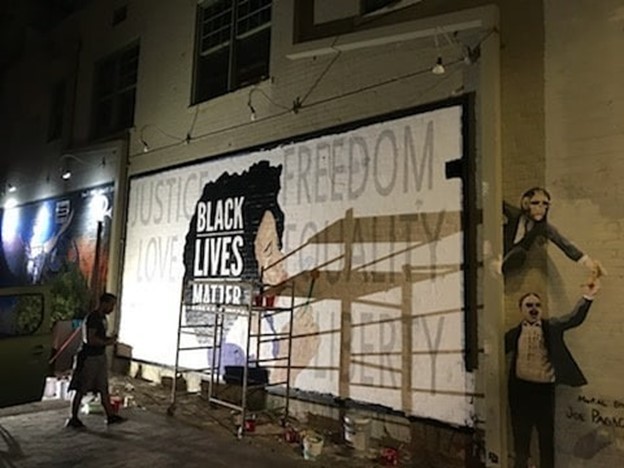
From Anchorage, Alaska to Pittsburgh, Pennsylvania, Harris’s artistic abilities are just as adaptive as his people skills. Starting his creative journey at the age of 5, he began drawing with his childhood friend Chris and hasn’t put the pen down since. Pyrography, graphic design and painting are just a few of his fortes. Not to mention that this is a family effort, as he regards his daughters as design managers — and fitness coordinators.
Harris recalled last May and the recurrence of social and political tension surrounding recent accounts of police brutality. That month, and many following, called people from all walks of life to step up in any way they could. For Harris, this meant putting his gifts to work.
RELATED: What’s Up, Docs? The Loft Cinema presents annual showcase of UA student documentary films
Thoughtfully brushed on the side of the Rialto Theater is Harris’ mural. Humbly, the artist thanked fellow Tucson artist Joe Pagac for the opportunity, as well as Cash Lansky for relaying the initial message to him.
“[Pagac] felt compelled to do something for the Black Lives Matter movement,” explained Harris. “He wanted to give local artists a chance to do something big so they could express themselves, and that he would help out in any way that they needed.”
The timing of this opportunity was ideal for Harris, as if his inner call to action had manifested itself.
“It was pretty much heaven-sent,” Harris said. “I was torn up emotionally. I was angry and frustrated. It’s weird being in that position where you want to help but you don’t know what you can do.”
Within hours of seeing the post, Harris contacted Pagac and the collaboration was underway.
“I immediately drafted a design but my daughter didn’t like it so we scrapped it,” joked Harris. “In the middle of the night, I got the idea of the young lady blowing out the dandelion and sent the rough draft over to [Pagac].”
The next day Harris and Pagac set up shop on the side of the Rialto.
“I did the major part of the young lady and her blowing out the dandelion,” explained Rob. “[Pagac] went ahead and sketched out the lettering for me and we pretty much met in the middle of the afro.”
Engrossed in teamwork and creative enthusiasm, the two didn’t step away from the wall until the last hour.
“The work flew by,” Harris recalled. “We were just hauling away having a good conversation and laughing. Before we knew it three hours had gone by and we finally took a step back to look at it.”
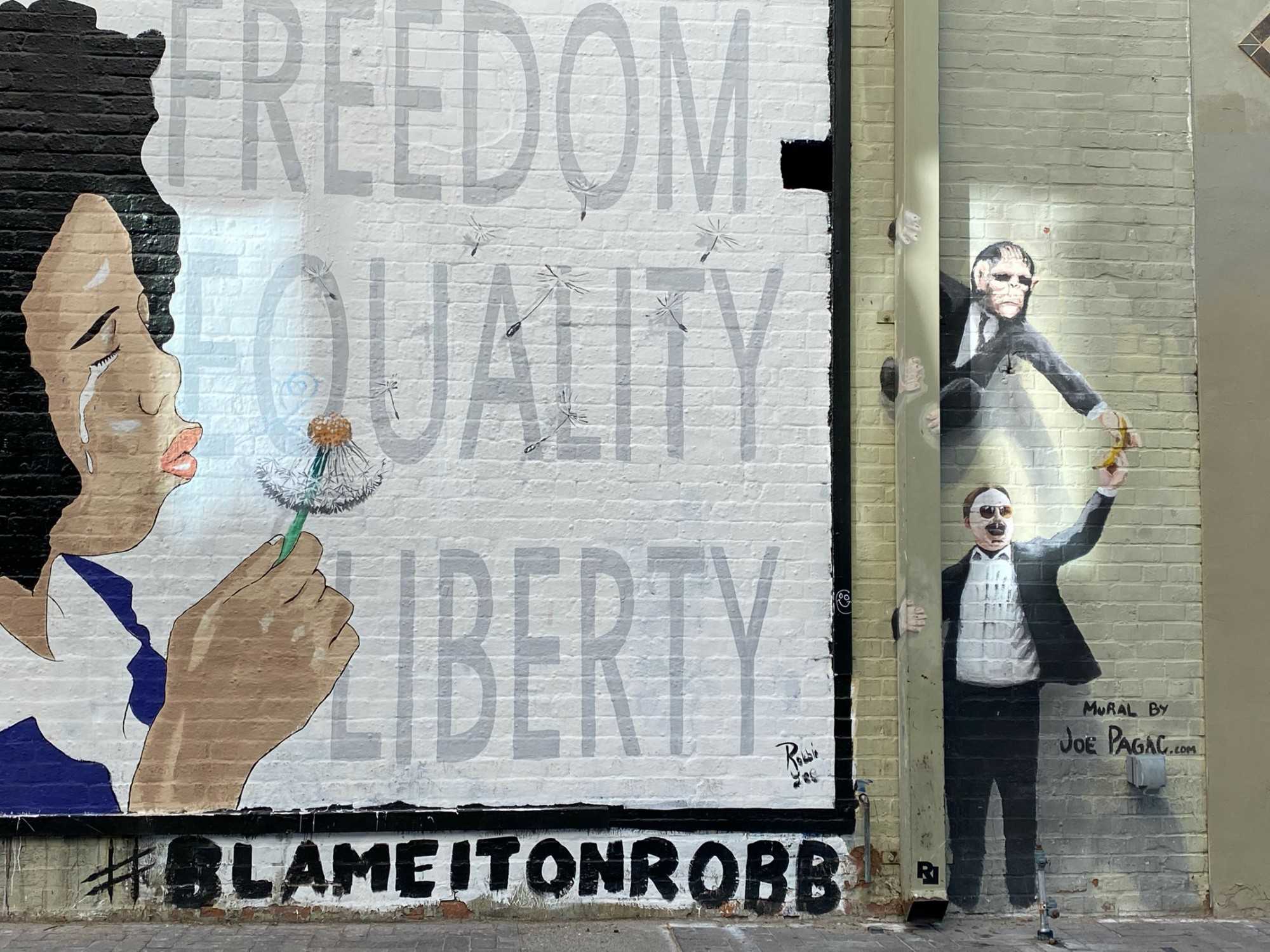
“Seeing my drawing on this huge wall was amazing,” Harris said.
Harris expressed the amount of gratitude he felt in that moment that came from a place of both relief and honor.
RELATED: UPRISING: Black Lives Matter Tucson’s zine calls to local Black creators
“Ultimately, I wanted to do something for the community that was positive,” Harris said. “Being able to accomplish that was a huge weight off of my shoulders.”
The muralist expanded on this feeling by referring to a quote by comedian Richard Pryor.
“Dracula, Frankenstein, the Wolfman, the Invisible Man, and Hercules don’t scare me … . What scares me is that one day my son will ask me, ‘What did you do, daddy, when the sh*t was going down?’”
It’s that closing question that inspired Harris to advocate using his talents.
“Now I have my little claim in history to show my daughters. I can tell them that when everything started getting stupid again, this is where your dad stood. This is what dad did. I can firmly say that I stood up for something right,” Harris said.
On the original Instagram post of the mural, Harris’ caption expressed the socio-political intention behind the piece. Thoughtfully stated, it reads, “I hope the image provokes growth in our world and day to day lives.”
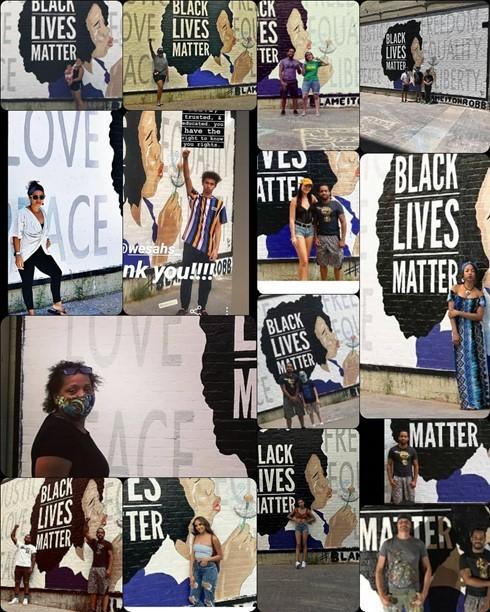
Harris wanted it to be known that there is still a lot of work to be done.
“We never get anywhere without talking first — my mural is there to provoke conversation,” Harris said.
The design of the mural was also very intentional.
“I wanted to put up something innocent enough that most people would wonder what the problem is in the first place,” Harris said. “I want somebody to walk around the corner and ask ‘Why is this young lady crying about equality? We have equality. We have justice.’ The overall goal that I want to reach is for that image to not make sense.”
In the case of activism art, the aim is eventual inapplicability rather than timelessness.
Our artist puts it best, stating that “Art has always been a part of history, and it’s an artist’s job is to reflect our time period. More people are going to look at the pictures rather than read the book,” Harris joked. “Our job as artists is to express what’s going on and give a point of view.”
Harris said that he wants the community to remember that the work isn’t done.
“Black Lives Matter is not just a Black person’s problem,” Harris said. “[Racial injustice and inequality] are rooted much deeper than one person, one event, one year.”
Harris said that he hopes that this is the lifetime in which we refuse to repeat the long history of violence and oppression that is engrained in our culture.
Since the murders of George Floyd and Breonna Taylor, the deaths that sparked the resurgence of BLM protests, many have taken it upon themselves to get more involved in community outreach, education, and other initiatives. Unfortunately, there have been many cases of police brutality following the summer. Jonathan Price, Marcellis Stinnette, Sincere Pierce, Angelo Crooms, and Casey Goodson are just a few people that have had their lives taken by law enforcement officers since October. Progress is progress, but as Harris said, there is still work to be done.
RELATED: Art activism: Carnegiea Literary Magazine opens charity print shop for No More Deaths
“We’re too smart,” Harris said.
Harris left us with some words of encouragement: “We have too many tools and too much ability for things to keep going like this. To anybody that feels compelled by anything they’ve seen, the work’s not done. Keep going.”
Writer’s note: In a recent webinar with the UA’s Global Experiential Learning (GEL), Harris shared that he is currently waiting for approval on two possible murals and is working on his personal projects.
Follow Selena Kuikahi on Twitter
Selena Kuikahi (she/her) is a senior studying both film and television and law.



